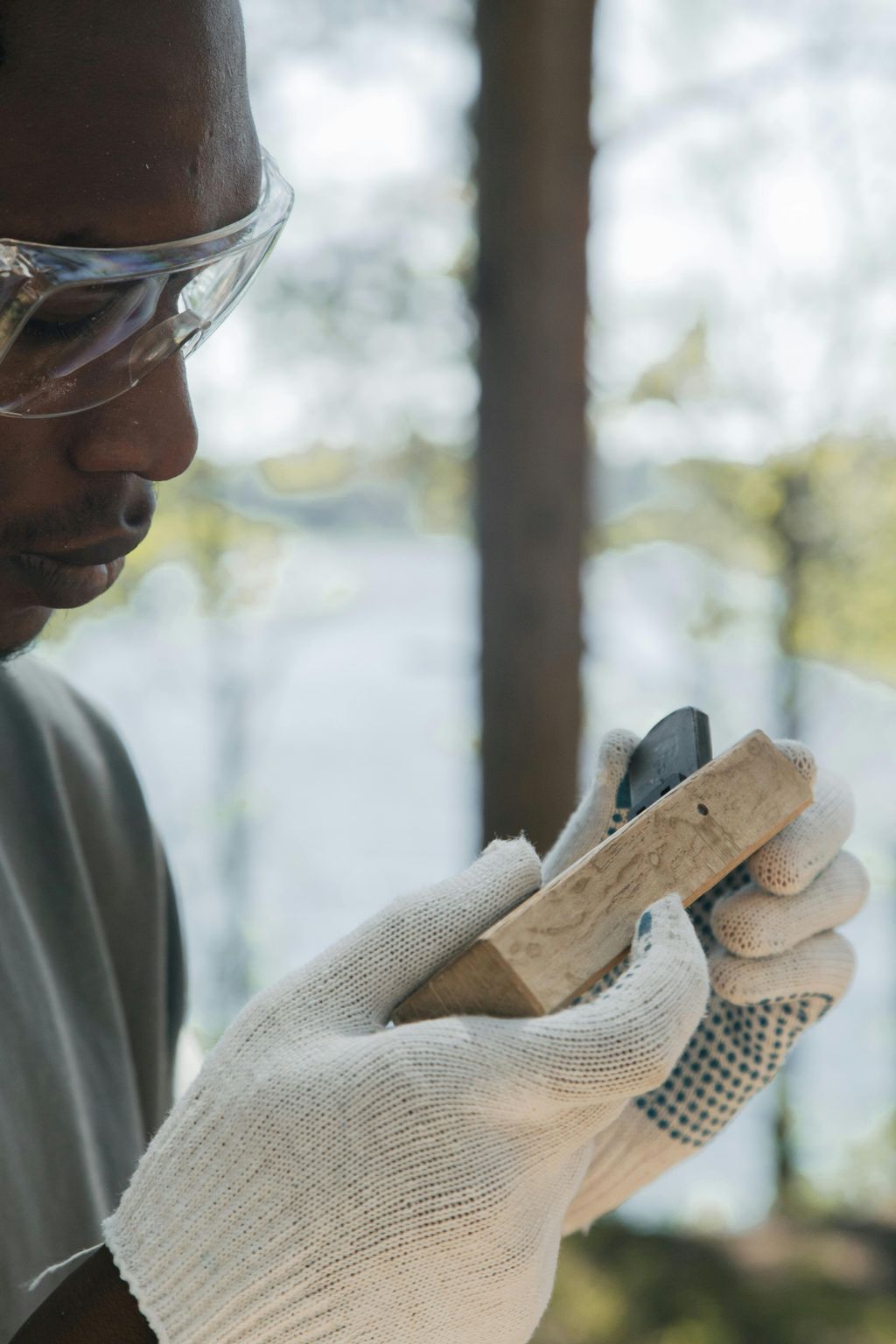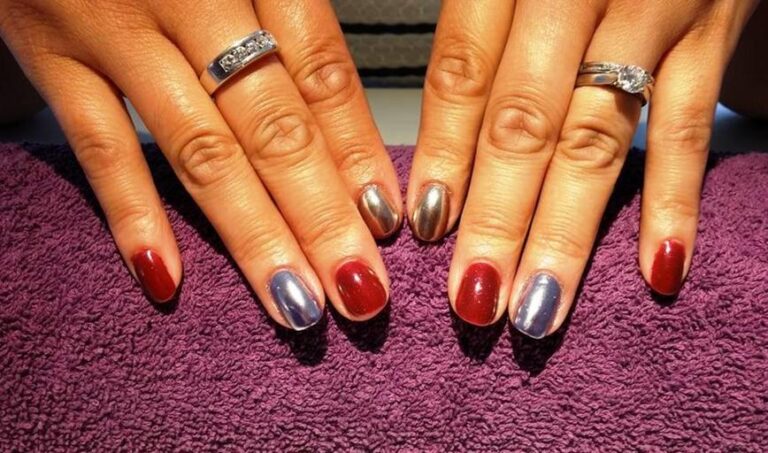“Safety First: Nails That Are the Safest”
Nails are essential tools in construction and carpentry, but they can pose safety risks if not used properly. This article provides a comprehensive overview of nail safety, including material selection, technological advancements, best practices for usage, environmental considerations, and the importance of quantity and quality. By understanding the key principles of nail safety, professionals and DIYers can ensure that their projects are completed safely and efficiently.
Key Takeaways
- Choose the right nail material for the specific job requirements.
- Utilize proper techniques and personal protective equipment (PPE) for safe nail usage.
- Consider eco-friendly nailing options to reduce environmental impact.
- Ensure quality control and optimal nail size for secure fastening.
- Balance cost and safety by purchasing nails in bulk.
Understanding Nail Safety: A Comprehensive Overview

The Anatomy of a Safe Nail
When considering the anatomy of a safe nail, it’s crucial to understand that every component, from the point to the head, plays a significant role in its overall safety and functionality. The shank, or the body of the nail, is the part that penetrates the material. It must be designed to withstand the forces applied during insertion without bending or breaking. The point should be sharp enough to enter materials with minimal splitting, while the head should be sufficiently large to prevent pull-through.
Material composition is also a key factor in nail safety. Nails made from high-quality steel, for example, offer greater strength and are less likely to bend or snap under pressure. Additionally, the surface finish can affect both the grip of the nail and its resistance to environmental factors like moisture and corrosion.
Here are some essential characteristics of a safe nail:
- Adequate length and diameter for the intended application
- Appropriate head size for material retention
- Sharp, well-formed point to minimize material damage
- Correct material and finish for environmental conditions
Tip: Always select a nail that matches the requirements of your project to ensure the highest level of safety and effectiveness.
Common Hazards Associated with Nails
When considering nail safety, it’s crucial to be aware of the hazards that can arise during their use. These hazards range from physical injuries to health concerns stemming from material composition and usage practices.
Physical injuries are perhaps the most immediate risk. Improper handling or accidents can lead to puncture wounds, hammer injuries, and other traumas. Additionally, repetitive motions during nail use can cause musculoskeletal issues over time.
Health concerns also play a significant role in nail safety. Materials used in nail production can contain harmful chemicals that pose risks upon prolonged exposure. For example, some coatings or treatments applied to nails may release volatile organic compounds (VOCs) or other toxins.
Tip: Always ensure proper ventilation when working with treated nails to minimize inhalation of potentially harmful substances.
To mitigate these risks, it’s essential to follow best practices for nail usage, including the selection of appropriate nails for specific tasks and the use of personal protective equipment (PPE).
Regulatory Standards for Nail Safety
Navigating the landscape of regulatory standards for nail safety is crucial for manufacturers and consumers alike. These standards ensure that nails meet specific criteria for strength, durability, and safety before they reach the market. In the United States, organizations such as the American Society for Testing and Materials (ASTM) provide guidelines that cover a range of nail types and uses.
Compliance with these standards is not just about adhering to legal requirements; it’s about committing to the safety of end-users. For instance, the ASTM F1667 standard specifies dimensions, mechanical properties, and performance requirements for driven fasteners. Adherence to such standards minimizes the risk of structural failures and injuries.
Always verify that the nails you purchase or use conform to the relevant safety standards for your region or industry.
While international standards may vary, common themes in nail safety regulations include material composition, load-bearing capacity, and corrosion resistance. These criteria help to ensure that nails are fit for purpose, whether they’re being used in construction, carpentry, or DIY projects.
Material Matters: Choosing the Right Nail for the Job

Steel Nails: Strength and Durability
Steel nails are known for their strength and durability. They are suitable for a wide range of applications, from framing to heavy construction. Here’s a comparison of steel nails based on their diameter and length:
| Nail Type | Diameter (inches) | Length (inches) |
|---|---|---|
| Common | 0.12 | 3 |
| Box | 0.13 | 3.25 |
| Finish | 0.11 | 2.5 |
When using steel nails, it’s important to ensure that the diameter and length are appropriate for the specific project. Additionally, proper hammering techniques and safety precautions should always be observed to prevent accidents and ensure a successful outcome.
Tip: Always wear appropriate personal protective equipment (PPE) when working with steel nails to protect yourself from potential hazards.
Stainless Steel Nails: Corrosion Resistance
When it comes to durability in moist or marine environments, stainless steel nails stand out for their exceptional corrosion resistance. Unlike standard steel nails, which can rust and deteriorate over time, stainless steel variants maintain their integrity, ensuring long-lasting connections in outdoor and high-humidity applications.
Stainless steel nails are particularly beneficial for projects that demand both strength and a clean, aesthetic finish. They are often the go-to choice for decking, siding, and other outdoor structures where the appearance of the fastener is just as important as its functional performance.
Tip: Always verify the grade of stainless steel when selecting nails for your project to match the level of corrosion resistance required.
Here’s a quick reference for the common grades of stainless steel nails and their typical uses:
- Grade 304: General outdoor use, resistant to corrosion from most oxidizing acids.
- Grade 316: Superior resistance to chloride corrosion, ideal for coastal environments.
- Grade 410: Hardened stainless steel, suitable for high-stress applications.
Aluminum Nails: Lightweight and Rustproof
When it comes to nail selection, aluminum nails are a popular choice due to their lightweight nature and impressive resistance to rust. These nails are ideal for applications where weight is a concern and where exposure to moisture is expected. The combination of lightweight properties and rustproof characteristics makes aluminum nails a versatile option for various projects. It’s important to note that while aluminum nails offer these advantages, they may not be suitable for heavy-duty applications or load-bearing structures. For a quick comparison of nail materials, consider the following table:
| Material | Weight | Rust Resistance |
|---|---|---|
| Steel | Heavy | Moderate |
| Stainless Steel | Moderate | High |
| Aluminum | Light | High |
In addition to their physical properties, aluminum nails are known for their ease of use and compatibility with nail guns, making them a convenient choice for professionals and DIYers alike. When using aluminum nails, it’s essential to ensure that the material being fastened can support the lighter weight of these nails, and proper fastening techniques should be employed to maximize their effectiveness.
Innovations in Nail Safety: Technological Advancements

Coated Nails: Enhanced Grip and Reduced Splitting
Coated nails are revolutionizing the way we approach fastening and carpentry. By adding a specialized layer to the nail’s surface, these nails provide an enhanced grip that significantly reduces the likelihood of slippage during hammering. This not only improves safety but also increases the precision of nail placement.
The additional coating also plays a crucial role in reducing wood splitting. Traditional nails can often cause damage to the wood, especially in delicate or thin materials. Coated nails, however, are designed with a thinner shank that gently pierces the wood without exerting excessive force, thereby minimizing the risk of splitting.
Benefits of Coated Nails:
- Improved grip and safety
- Reduced wood splitting
- Increased durability and longevity
Tip: When selecting coated nails, consider the type of coating that best suits your project. Some coatings are designed for specific environments or materials, offering additional protection against elements like moisture or corrosion.
Pneumatic Nails: Precision and Reduced Injury Risk
Pneumatic nails offer a significant advancement in the realm of nail safety, providing both precision in application and a notable reduction in injury risk. These nails are designed to be used with pneumatic nail guns, which deliver consistent driving power and depth. This level of control is crucial when working with delicate materials or in tight spaces where manual hammering would be impractical or unsafe.
Pneumatic nail guns enhance efficiency and reduce the likelihood of mishaps that can occur with traditional hammering. For instance, the risk of hitting one’s thumb is virtually eliminated. Moreover, the use of these tools can decrease fatigue, as they require less manual force than a hammer.
Tip: Always ensure that the safety features of your pneumatic nail gun are engaged and in good working order to prevent accidental discharge.
When selecting a pneumatic nailer, consider the following aspects to ensure optimal safety and performance:
- The type of nailer (framing, finishing, roofing, etc.)
- The size and type of nails it accommodates
- The power source (pneumatic, fuel-driven, or battery-powered)
- The weight and ergonomics of the tool
By paying attention to these details, professionals and DIY enthusiasts alike can achieve secure fastening with minimal risk.
Magnetic Nails: Minimizing Accidental Drops
The advent of magnetic nails has introduced a novel solution to a common problem faced by both professionals and DIY enthusiasts: accidental drops. These specialized nails are designed with a magnetic feature that helps them adhere to metal surfaces or magnetic tools, reducing the likelihood of them slipping out of grasp and causing injuries or work interruptions.
- Magnetic nails* can be particularly useful in tight spaces or when working at heights, where dropping a nail can be more than just an inconvenience. For instance, when working on a ladder, the magnetic property ensures that the nail stays attached to your tool belt or wristband, allowing for safer and more efficient work.
Tip: Always test the magnetic strength of the nails on different surfaces before use to ensure they provide sufficient hold for your specific project needs.
While magnetic nails are a step forward in safety, it’s important to remember that they are not a substitute for proper safety protocols. Adequate personal protective equipment (PPE) and attention to detail remain crucial in preventing accidents.
Safe Nail Usage: Best Practices for Professionals and DIYers

Proper Nail Selection for Different Materials
Choosing the right nail for a specific material is crucial for both safety and the integrity of the project. Different materials require nails with specific characteristics to ensure a secure and lasting hold. For instance, hardwoods like oak or maple demand nails that are strong enough to penetrate without bending or breaking. On the other hand, softer materials such as drywall or pine can be fastened effectively with thinner, less rigid nails.
When selecting nails, consider the material’s density, thickness, and environmental exposure. Here’s a simple guide to help you match nail types with common materials:
- Hardwood: Use thicker, stronger nails; consider spiral or ring shank for extra grip.
- Softwood: Opt for thinner nails; a standard smooth shank may suffice.
- Drywall: Choose nails with a wide head to prevent pulling through the material.
- Outdoor projects: Select galvanized or stainless steel nails to resist corrosion.
Tip: Always pre-drill holes when working with hardwoods to prevent splitting and to make nailing easier.
Remember, the right nail not only improves the safety of your work but also its longevity and aesthetic appeal. It’s a small component with a significant impact on the overall success of your construction or repair.
Techniques for Safe Hammering and Nail Gun Use
When it comes to using hammers and nail guns, safety is paramount. The key to preventing accidents is to follow a set of established techniques. For hammers, ensure you select the right size and weight for the job at hand. A hammer that is too heavy can lead to fatigue, while one that is too light may require excessive force, increasing the risk of a missed strike.
With nail guns, the focus shifts to understanding the tool’s operation and features. Always engage the safety mechanisms when the tool is not in use, and be mindful of the nail gun’s recoil, which can cause loss of control if not anticipated. Here are some essential tips:
- Inspect your tools before use for any signs of wear or damage.
- Position the nail gun perpendicular to the work surface to ensure proper nail penetration.
- Maintain awareness of your surroundings, especially where the nail will exit if it passes through the material.
Tip: Always disconnect pneumatic nail guns from the air supply when clearing jams, performing maintenance, or when not in active use to prevent accidental discharge.
Personal Protective Equipment (PPE) Recommendations
When it comes to nail safety, the use of Personal Protective Equipment (PPE) is essential for both professionals and DIY enthusiasts. PPE serves as the first line of defense against potential injuries and health hazards associated with nail work.
Gloves are a must-have to protect against chemicals and sharp objects. Eye protection, such as safety goggles, shields against flying debris. Masks are important to avoid inhaling dust and fumes, especially when sanding or applying chemicals. Additionally, wearing a protective apron can help keep clothing free from stains and damage.
Tip: Always inspect your PPE before use to ensure there are no tears, cracks, or other signs of wear that could compromise its effectiveness.
It’s also crucial to select the right PPE for the task at hand. Here’s a simple list to guide you:
- Nitrile or latex gloves for chemical handling
- Thick leather gloves for heavy-duty work
- Safety goggles for eye protection
- Dust masks or respirators for airborne particles
- Protective aprons for spill protection
Remember, the best PPE is the one that fits well and is comfortable enough to wear for the duration of your project.
Environmental Considerations: Eco-Friendly Nailing Options

Biodegradable Nails: A Sustainable Choice
In the realm of eco-friendly construction and DIY projects, biodegradable nails represent a significant leap forward. These nails are designed to break down naturally over time, reducing the environmental impact associated with traditional metal fasteners. Made from plant-based materials or other compostable substances, biodegradable nails offer a guilt-free solution for those looking to minimize their carbon footprint.
Biodegradable nails are not just a theoretical concept; they are available in various forms to suit different applications. For instance, some are ideal for temporary structures or seasonal use, where they can be left in place to decompose after serving their purpose. This feature is particularly beneficial in reducing waste during disassembly or demolition.
Tip: When using biodegradable nails, consider the expected lifespan of the project and the local climate conditions, as these factors will influence the degradation rate of the nails.
While the adoption of biodegradable nails is a step towards sustainable building practices, it is essential to balance their use with the structural integrity requirements of a project. Ensuring that the chosen nail is appropriate for the material and expected load is crucial for maintaining safety and functionality.
Recycled Material Nails: Closing the Loop
In the quest for sustainability, recycled material nails represent a significant stride towards eco-friendly construction and nail care. These nails are typically made from post-consumer or post-industrial steel and aluminum, which not only reduces the demand for virgin materials but also minimizes waste. By reprocessing metal scraps into new nails, the industry is effectively closing the loop on material use.
Recycling doesn’t just conserve resources; it also requires less energy compared to producing new materials from scratch, thereby reducing the carbon footprint associated with nail manufacturing. Moreover, the use of recycled materials can often meet or even exceed the performance standards of their non-recycled counterparts.
When selecting recycled nails, it’s important to consider the source and the percentage of recycled content. Higher recycled content generally indicates a greener product.
While recycled nails are a step in the right direction, it’s crucial to balance environmental benefits with the nails’ structural integrity. Quality control measures must be stringent to ensure that these eco-friendly options do not compromise on safety or functionality.
Reducing Waste in Nail Packaging and Distribution
When it comes to reducing waste in nail packaging and distribution, sustainable packaging alternatives and recycling processes play a crucial role. Implementing these strategies can significantly minimize environmental impact and promote a more eco-friendly approach to nail distribution. Additionally, diligent recycling of materials like paper, plastic, glass, and metal can contribute to a more sustainable nail industry. It’s essential for nail manufacturers and distributors to prioritize these practices to ensure a greener and more sustainable future for the industry.
Safety in Numbers: The Role of Quantity and Quality in Nail Safety

Optimal Nail Length and Diameter for Secure Fastening
When selecting the optimal nail length and diameter for secure fastening, it’s crucial to consider the thickness and density of the materials being joined. A general rule of thumb is to use a nail length that is at least three times the thickness of the material. This ensures sufficient penetration and holding power. Additionally, the diameter of the nail should be proportional to the density of the material, with denser materials requiring thicker nails for secure fastening. It’s important to match the nail size to the specific application to achieve the best results.
For a quick reference, here’s a table summarizing the recommended nail length based on material thickness:
| Material Thickness | Recommended Nail Length |
|---|---|
| 1/2 inch | 1 1/2 inch |
| 3/4 inch | 2 inch |
| 1 inch | 3 inch |
Remember, these are general guidelines, and it’s essential to assess each project’s unique requirements for the most effective nail selection and secure fastening.
Quality Control: Ensuring Nail Integrity
Ensuring the integrity of nails is paramount in construction and manufacturing. Quality control processes are vital to detect any defects that could compromise safety. High-speed, precision inspection machines, such as those from Zeus Techno, utilize cutting-edge vision technology to inspect nails at speeds up to 2000 nails per minute (npm), sorting them efficiently and effectively.
Visual inspection is another critical step in the quality control process. This method is particularly important in sensitive applications, such as pharmaceutical packaging, where even minor imperfections can have significant consequences.
Remember, the goal of quality control is not only to identify defective nails but also to prevent them from reaching the consumer.
For nail technicians, maintaining the natural nail’s health is a testament to their expertise. Similarly, in construction, the integrity of soil nail walls depends on robust inspection and control processes. These examples underscore the universal importance of quality control across various industries.
Bulk Purchasing: Balancing Cost and Safety
When it comes to securing nails in bulk, professionals must strike a delicate balance between cost-effectiveness and safety assurance. Bulk purchasing can offer significant savings, but it’s crucial to not compromise on the quality of nails, as this could lead to structural failures or safety hazards.
Economies of scale can be beneficial, but they must be approached with a discerning eye. Here are some key considerations:
- Assess the reputation of the supplier for consistent quality.
- Verify that the nails meet all relevant safety standards.
- Consider the total cost of ownership, including potential costs from failures or defects.
Tip: Always request a sample batch of nails before committing to a large order to ensure they meet your specific safety and quality requirements.
By carefully evaluating these factors, professionals can make informed decisions that uphold safety without inflating costs unnecessarily.
When it comes to nail safety, both quantity and quality play a crucial role. At NAILinspire.com, we understand the importance of maintaining high standards in nail care. Our ultimate online nail art design library is dedicated to providing valuable resources and inspiration for nail enthusiasts. Whether you’re a professional nail artist or a DIY enthusiast, our collection of designs, tutorials, and tips will help you elevate your nail game. Visit NAILinspire.com today and discover the endless possibilities for creating stunning nail art.
Frequently Asked Questions
What are the most common hazards associated with nails?
Common hazards associated with nails include puncture wounds, splinters, and flying debris during nail installation.
How do I choose the right nail for my project?
Consider the material you are fastening, the required strength and durability, and any environmental factors such as corrosion resistance or eco-friendliness.
What personal protective equipment (PPE) should I use when working with nails?
It is recommended to use safety goggles, gloves, and closed-toe shoes to protect against eye injuries, hand injuries, and foot injuries.
Are there eco-friendly options for nails?
Yes, there are eco-friendly options such as biodegradable nails and nails made from recycled materials, which contribute to sustainability efforts.
What are the best practices for safe hammering and nail gun use?
Always maintain proper hand placement, aim, and control when hammering nails, and ensure that nail guns are used according to manufacturer instructions.
How can I ensure the quality and integrity of the nails I purchase?
Check for industry-standard markings and certifications on the nails, and purchase from reputable suppliers to ensure quality and integrity.







